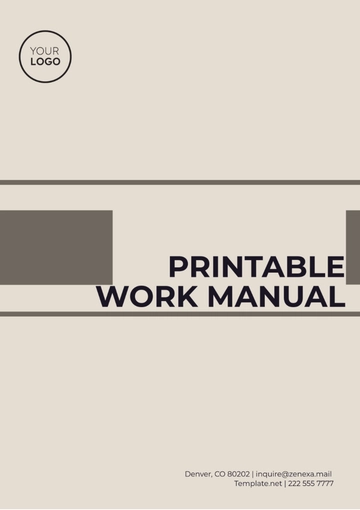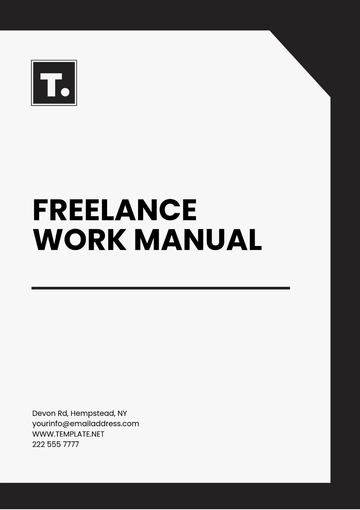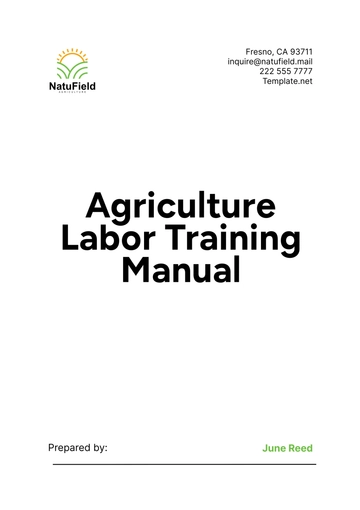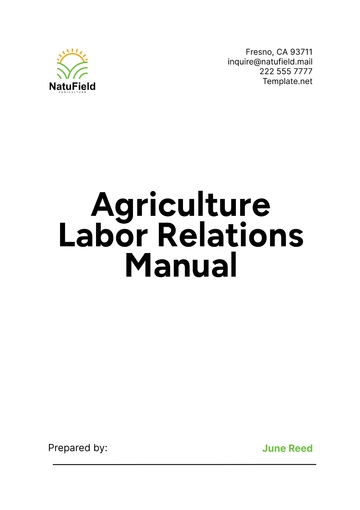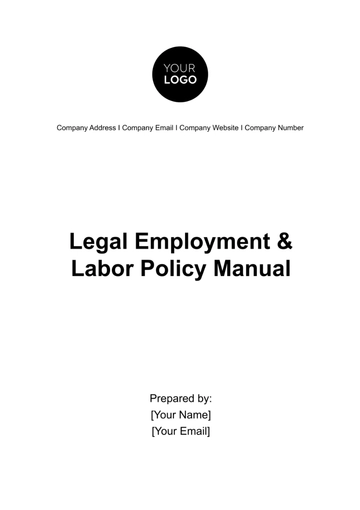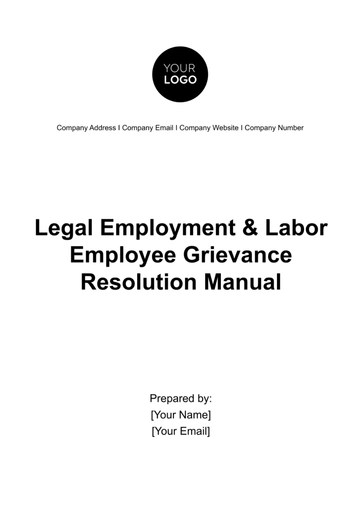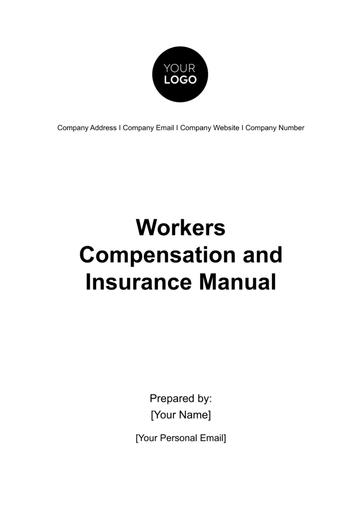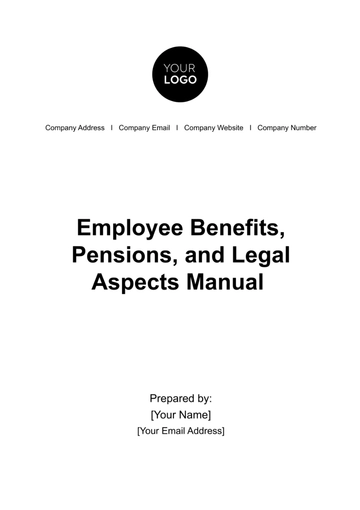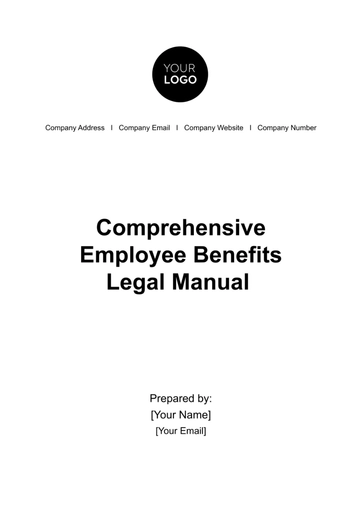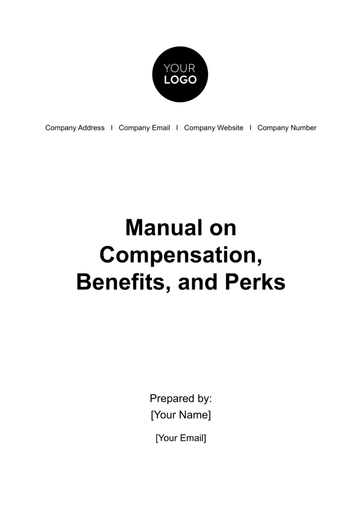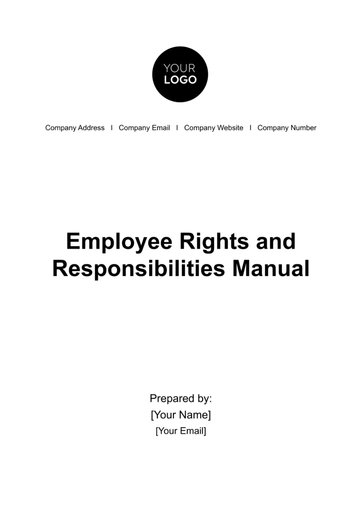Free Annual Review of Employment Laws and Compliance Manual HR
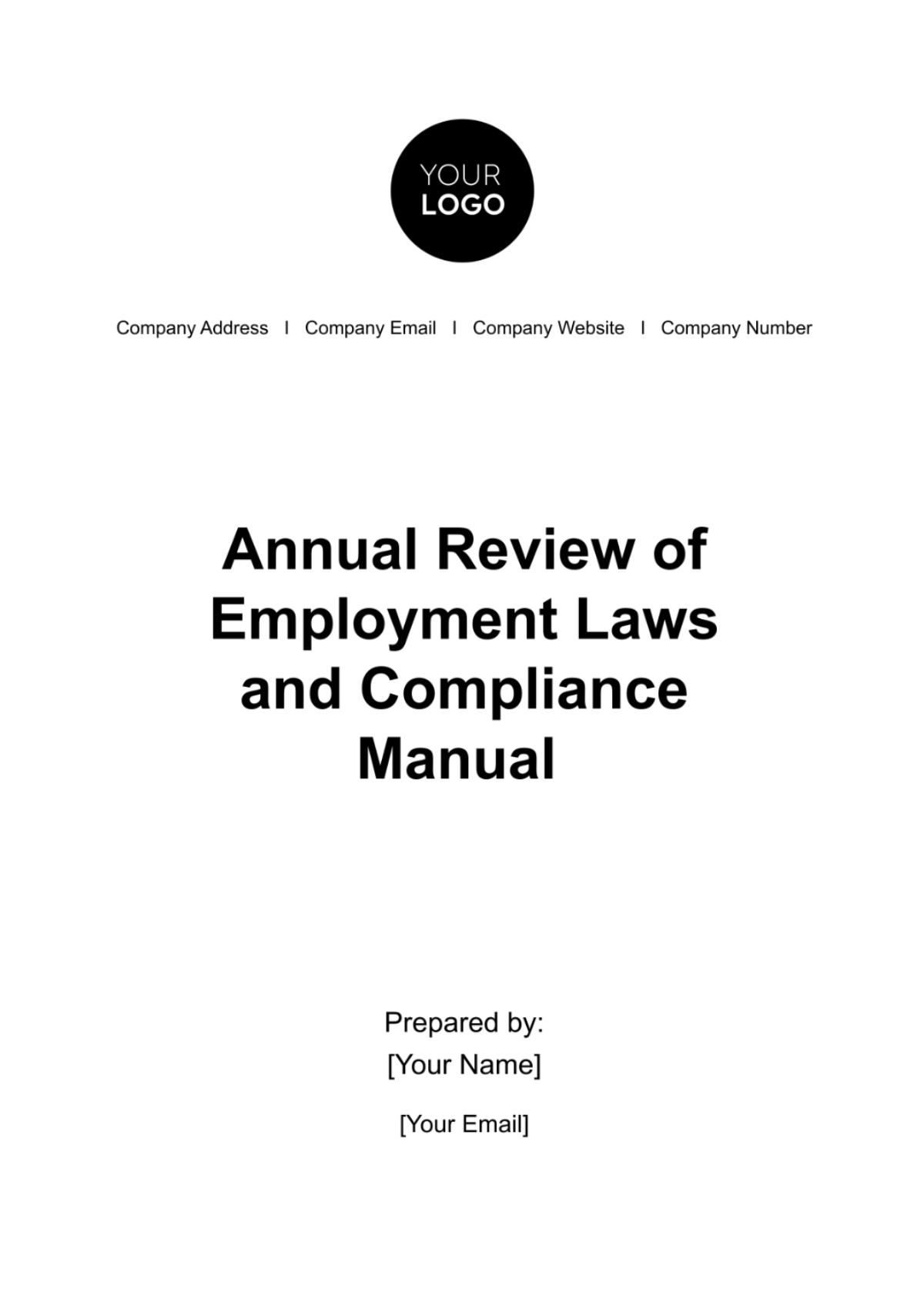
Table of Contents
Introduction.....................................................................................................................2
II. Legislative Updates....................................................................................................3
III. Compliance Practices................................................................................................6
IV. Emerging Trends and Challenges............................................................................9
I. Introduction
Welcome to the Annual Review of Employment Laws and Compliance Manual. In an era marked by dynamic shifts in workforce dynamics and legal landscapes, this comprehensive guide stands as an indispensable resource tailored for Human Resources professionals, managers, and legal teams alike. Its overarching purpose? To serve as a lighthouse, guiding organizations through the intricate and ever-evolving maze of employment laws and regulations. In a world where the tiniest legal misstep can reverberate through an organization, this manual empowers you with a profound understanding of legislative updates, best compliance practices, and the unfolding trends that shape our contemporary labor market.
Before we delve further into the intricacies of this manual, let us ground our discussion with a few stark figures. According to a survey conducted by the U.S. Chamber of Commerce, approximately 10% of all civil litigation in the United States revolves around employment-related issues. That translates to billions of dollars in legal costs, not to mention the immeasurable toll on an organization's reputation and its workforce. Moreover, research from the Society for Human Resource Management (SHRM) indicates that organizations that fail to keep pace with changing employment laws are more likely to face legal liabilities, with an average cost of over $500,000 per case. These figures are not just statistics; they represent the real-world consequences of inadequate understanding and implementation of employment laws.
Importance of Annual Review
So, why is an annual review of employment laws essential? Consider this: The labor and employment landscape is akin to a turbulent sea, where new legislative currents, court decisions, and administrative regulations constantly reshape the legal terrain. To navigate these waters successfully, staying informed is not a luxury but an imperative. Annual reviews, such as the one this manual facilitates, are your compass, helping you to stay on course and, more importantly, arrive at your destination without running aground.
Imagine the case of a company that failed to adapt to a recent change in overtime regulations. As a result, they unwittingly subjected themselves to costly litigation, jeopardizing their financial stability and tarnishing their reputation. On the flip side, another organization, diligently engaging in annual employment law reviews, detected the change early, modified their policies accordingly, and saved themselves from the precipice of legal turmoil. The lesson is clear: proactive annual reviews minimize the risk of costly legal disputes, enhance employee satisfaction by demonstrating a commitment to their rights, and create a workplace culture that values compliance as a cornerstone of its foundation.
Key Objectives
Now that we've established the paramount importance of an annual review, let's outline the key objectives that this manual will address:
1. Compliance Assurance: The first and foremost objective is to ensure that your organization remains in steadfast compliance with federal, state, and local employment laws. The consequences of non-compliance are not limited to financial penalties; they can disrupt operations, undermine organizational credibility, and lead to the erosion of trust within your workforce. By staying ahead of legal changes, you can proactively align your policies and practices with the law, mitigating these risks. |
2. EmployeLegislative Updates e Well-being: In today's socially conscious world, fostering a safe, inclusive, and respectful work environment isn't just a legal requirement; it's a moral imperative. Compliance with employment laws goes hand in hand with promoting the well-being of all employees, regardless of their background, beliefs, or identity. By understanding the nuances of these laws, you can create an environment that supports the physical and emotional welfare of your employees. |
3. Adaptability: The business landscape is constantly evolving, and so are the challenges it presents. Recent seismic shifts like the rise of remote work heightened concerns over data privacy, and the imperative of diversity and inclusion initiatives are reshaping how organizations operate. An annual review equips you with the knowledge to adapt to these emerging trends proactively. |
4. Efficiency: Finally, this manual seeks to streamline HR policies and procedures while ensuring that your organization remains in lockstep with legal requirements. Striking this delicate balance between efficiency and compliance is paramount, as it enables organizations to allocate resources effectively and focus on their core missions. |
As we embark on this journey through the annals of employment laws and compliance, our destination is clear: a workplace where the principles of legality, fairness, and respect flourish, ensuring the well-being of both the organization and its invaluable human capital. So, let us delve deeper into this manual, armed with knowledge, and poised to make a difference in the world of employment laws and compliance.
Staying Informed, Adapting with Precision
In the realm of employment laws, knowledge is power, and precision is paramount. Welcome to the Legislative Updates section, where we will navigate the intricate landscape of legislative changes and developments that can significantly impact your organization's operations and compliance efforts. Our journey will encompass both federal and state/local employment laws, ensuring that you are well-versed in the latest legal mandates and obligations.
Federal Employment Laws
1. Title VII of the Civil Rights Act
Title VII of the Civil Rights Act, a cornerstone of employment law, stands as a sentinel against discrimination in the workplace. It prohibits discrimination based on race, color, religion, sex, and national origin. However, the winds of change have swept through Title VII in recent times. Notably, it has expanded its protective umbrella to include LGBTQ+ individuals, reinforcing the significance of gender identity and sexual orientation as protected categories. The implications of these updates resonate not just in the legal sphere but in shaping the ethos of your organization's workplace culture. |
2. Fair Labor Standards Act (FLSA)
The Fair Labor Standards Act, the bedrock of wage and hour regulations, governs minimum wage, overtime pay, and child labor standards. Here, we'll discuss key updates, from adjustments to the minimum wage to their repercussions, touching both federal and state-specific rates. Ensuring compliance with these changes is not merely a legal obligation but also a fundamental element of maintaining equitable employment practices. |
3. Americans with Disabilities Act (ADA)
The ADA, designed to protect the rights of individuals with disabilities, remains in a state of continuous evolution. New guidelines are emerging, especially concerning accommodations in the workplace, with a particular focus on how they pertain to the growing trend of remote work arrangements. In the era of flexibility and inclusivity, understanding these nuanced developments is pivotal for creating a workplace that embraces diversity and meets the needs of all employees. |
4. Family and Medical Leave Act (FMLA)
Our journey through federal employment laws wouldn't be complete without discussing FMLA updates. Here, we'll explore expansions in leave eligibility, paid family leave provisions, and military caregiver leave requirements. These changes are not just legislative footnotes but impactful facets of your organization's commitment to supporting employees during significant life events. |
5. Other Pertinent Federal Laws
This section goes beyond the aforementioned and delves into additional federal laws that hold sway over the employment landscape. From the Age Discrimination in Employment Act (ADEA) to the Equal Pay Act (EPA) and the Occupational Safety and Health Act (OSHA), we'll cover the intricate web of regulations that govern various aspects of the employment relationship. |
State and Local Employment Laws
1. Overview of State Laws
States wields significant autonomy when it comes to shaping employment laws. These unique regulations can encompass hiring practices, termination protocols, and wage regulations. As we explore state-specific nuances, you'll gain insight into the ever-evolving patchwork of employment regulations that may impact your organization's operations. |
2. Local Regulations and Ordinances
Zooming in further, we'll investigate local ordinances that often fly under the radar but carry substantial implications for employers. These can include citywide minimum wage laws, paid sick leave requirements, and other jurisdiction-specific mandates that demand meticulous compliance. |
3. Changes in Jurisdictional Laws
Lastly, we'll emphasize the importance of staying vigilant regarding recent changes in jurisdictional laws. These shifts should not merely be observed but seamlessly integrated into your HR policies and procedures. A proactive approach ensures that your organization remains agile and compliant, regardless of the regulatory landscape. |
As we embark on this section, let us remain vigilant, adaptable, and resolute in our commitment to understanding and adhering to employment laws, for they are the bedrock upon which fair, inclusive, and legally sound workplaces are built.
II. Compliance Practices
Strategic Vigilance, Proactive Governance
As we navigate the labyrinth of employment laws and regulations, understanding and awareness are the first steps toward compliance. However, mere knowledge is not enough; it must be paired with strategic and proactive compliance practices. In this section, we will delve into the heart of organizational compliance, exploring key practices that not only ensure adherence to the law but also cultivate a culture of ethics and responsibility within your workplace.
HR Policies and Procedures Review
1. Anti-Discrimination and Harassment Policies
In the ever-evolving landscape of employment laws, the foundation of a strong compliance framework is laid with policies designed to prevent discrimination and harassment. Regular reviews are not just advisable; they are indispensable. These reviews ensure that your policies are a reflection of current legal standards. Furthermore, comprehensive training on recognizing, addressing, and preventing discrimination and harassment is not merely a box to tick; it is a proactive measure that safeguards your employees and your organization.
2. Compensation and Benefits Policies
Compensation and benefits policies form the economic bedrock of your employment relationships. Regular audits of these policies are imperative to ensure compliance with wage laws and benefit regulations. This practice becomes even more crucial as minimum wage laws continue to evolve, often varying at the federal and state levels. Your commitment to equitable compensation practices is a testament to your organization's integrity.
3. Workplace Safety and Health Policies
Recent global events, notably the COVID-19 pandemic, have heightened our awareness of workplace safety and health. Reviewing safety protocols and health guidelines is not just a legal requirement; it is a moral responsibility. This extends beyond pandemic considerations to encompass all potential hazards that your workforce may encounter. Ensuring a safe work environment is not an option; it is an obligation.
4. Employee Privacy Policies
In an age where data privacy is paramount, your employee privacy policies must be airtight. They should align with data protection laws and adhere to employee consent requirements. Your ability to safeguard sensitive employee data is not just a legal necessity; it is a testament to your commitment to their privacy and security.
5. Record-Keeping and Documentation
In the realm of compliance, documentation is your armor. Maintaining accurate record-keeping practices is not just a matter of administrative convenience; it is the bedrock upon which you can provide evidence of your unwavering compliance with employment laws and regulations.
Employee Training and Development
1. Compliance Training Programs
Compliance training programs should not be viewed as mere obligations but as strategic investments. Implement mandatory programs covering topics like discrimination, harassment, and safety protocols. Regular refreshers are not redundant; they are essential to keep employees informed, engaged, and vigilant.
2. Diversity and Inclusion Initiatives
The drumbeat for diversity and inclusion grows louder each day. It's not enough to simply meet legal requirements; organizations must actively promote diversity and inclusion through training, initiatives, and inclusive hiring practices. Aligning with emerging trends is not just progressive; it's necessary to thrive in a diverse world.
3. Safety Training and Certifications
Safety training should be considered an integral part of employee development, especially for those engaged in hazardous work or remote arrangements. Safety is not an option; it's a prerequisite for employee well-being and legal compliance.
4. Employee Feedback and Suggestions
Your employees are your greatest allies in the pursuit of compliance excellence. Encourage them to provide feedback and suggestions for improving compliance practices. Fostering a culture of continuous improvement is not just a buzzword; it's the path to staying ahead of legal shifts.
Auditing and Monitoring
1. Compliance Audits and Self-Assessments
Compliance is not a static state; it's a dynamic process. Regular audits and self-assessments are your tools for identifying areas of improvement and promptly addressing compliance gaps. This proactive approach minimizes risk and demonstrates your commitment to legal adherence.
2. Regular Monitoring and Reporting
Compliance is not a one-time commitment; it's an ongoing journey. Implementing mechanisms for continuous monitoring and reporting ensures that compliance remains a top priority, fostering transparency and accountability.
3. Corrective Actions and Remediation
Despite our best efforts, compliance issues may arise. What distinguishes responsible organizations is their ability to develop a clear plan for corrective actions and remediation. Emphasis should be placed on swift resolution and prevention of recurrence.
4. Legal Consultation and Compliance Partnerships
In navigating the complex legal landscape, consider legal counsel and partnerships with compliance experts not as a last resort but as strategic allies. Engaging with these professionals is not a sign of weakness; it's a pragmatic approach to addressing complex legal matters effectively.
Compliance Timeline Table
Date | Federal Legislative Update | State Legislative Update |
January 1, 2050 | Amendment to FLSA Minimum Wage | [State Name] Minimum Wage Increase |
March 15, 2050 | Title VII Expansion for LGBTQ+ Protections | [State Name] Anti-Discrimination Laws Update |
July 1, 2050 | ADA Guidelines for Remote Work Arrangements | [State Name] Remote Work Laws |
September 30, 2050 | FMLA Amendments | [State Name] Paid Family Leave Regulations |
November 15, 2050 | EPA Updates | [State Name] Equal Pay Laws |
December 10, 2050 | OSHA Regulations Revision | [State Name] Workplace Safety Updates |
As we journey through this section on compliance practices, let us remain steadfast in our commitment to not just meet the letter of the law but to exceed it. Compliance is not a burden; it's an opportunity to foster a workplace culture built on ethics, integrity, and responsibility.
III. Emerging Trends and Challenges
Navigating Uncharted Waters: Embracing Change and Ensuring Compliance
In the ever-evolving world of employment laws and compliance, staying ahead of the curve is not just an option; it's a strategic imperative. As we venture into the realm of emerging trends and challenges, this section will equip you with the knowledge and insights needed to proactively address new legal horizons, fortify your organization's commitment to compliance, and navigate the dynamic landscape of employment regulations.
Remote Work and Telecommuting Regulations
Remote work is no longer a fringe concept but a mainstream practice. Understanding and adapting to the legal requirements governing remote employees is not a choice; it's a necessity. This includes delving into the intricacies of taxation, labor laws, and data security as they pertain to remote work arrangements. Staying compliant in this context is not just about legal adherence; it's about embracing a modern, flexible work culture.
Data Privacy and Cybersecurity Concerns
In an age where data is both currency and vulnerability, strict compliance with data privacy regulations is paramount. The likes of GDPR, CCPA, and HIPAA have cast a wide net of legal obligations that impact how you handle employee and customer data. Your commitment to safeguarding this information goes beyond legal boxes; it's about trust and protection.
Gig Economy and Independent Contractor Issues
The gig economy is a seismic shift in how work is structured. Staying informed about the ever-evolving regulations governing gig workers and the classification of employees as independent contractors is not just a legal obligation; it's a reflection of the shifting sands of workforce dynamics. This knowledge will help you structure your workforce effectively and ethically.
COVID-19 and Pandemic-Related Regulations
The COVID-19 pandemic has ushered in a new era of workplace regulations. From vaccination mandates to remote work policies and enhanced workplace safety protocols, these regulations are not just temporary measures; they have far-reaching implications for the future of work. Vigilance is not just a buzzword; it's a practical necessity.
Diversity, Equity, and Inclusion Initiatives
Diversity, equity, and inclusion (DEI) initiatives are not just regulatory checkboxes; they are cornerstones of an ethical and successful workplace. Compliance with legal requirements is crucial, but more importantly, these initiatives create an inclusive and equitable environment that values the contributions of all employees. Prioritizing DEI is not just about meeting quotas; it's about fostering a culture of respect and fairness.
By utilizing this Annual Review of Employment Laws and Compliance Manual, your organization embarks on a journey of proactive adaptation. You will address legal challenges head-on, foster a culture of compliance, and thrive in a landscape marked by change. Staying informed is not a luxury; it's a necessity. Taking action is not an option; it's an imperative. Ensuring that your workplace remains a safe, fair, and thriving environment for all is not just a goal; it's a commitment.
- 100% Customizable, free editor
- Access 1 Million+ Templates, photo’s & graphics
- Download or share as a template
- Click and replace photos, graphics, text, backgrounds
- Resize, crop, AI write & more
- Access advanced editor
Stay ahead of employment laws effortlessly with Template.net's Annual Review of Employment Laws and Compliance Manual HR Template. Seamlessly update and customize your compliance manual to reflect the latest regulations. Ensure legal adherence, reduce risks, and empower your HR team with a comprehensive resource for navigating employment law changes. Download now!
